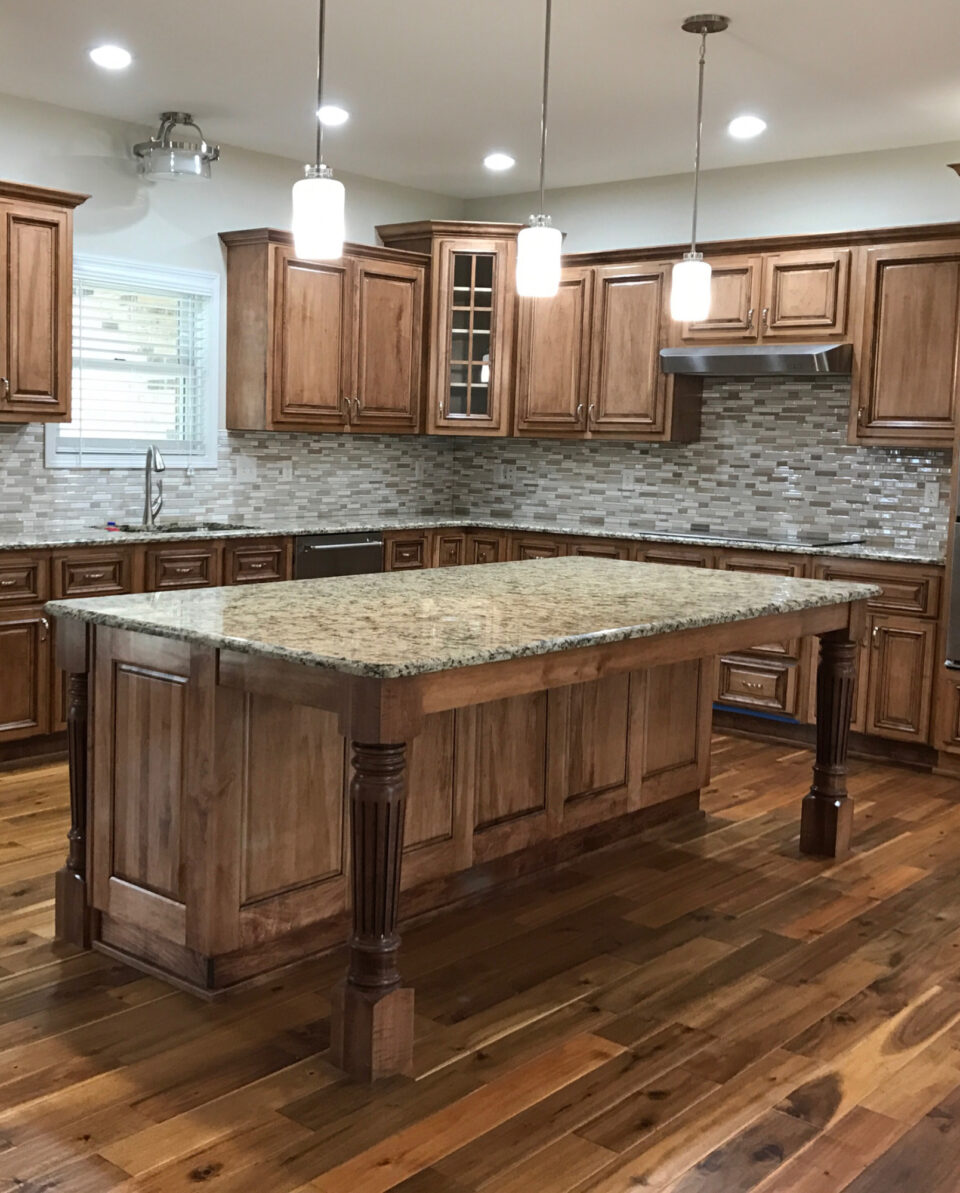The Value of a Sturdy Cooking Area Island Leg in Creating a Practical Food Preparation Location
A tough kitchen area island leg serves as a basic component in developing a functional cooking setting, giving essential assistance for both the kitchen counter and various kitchen activities. As kitchens progress right into multifunctional locations for food preparation, dining, and mingling, the selection of materials and design factors to consider for island legs becomes increasingly vital.
Advantages of Sturdy Island Legs
Providing necessary assistance, strong cooking area island legs play a pivotal role in enhancing the capability and resilience of cooking area islands - kitchen island leg. These legs not just birth the weight of the countertop and any extra products put on the island, but likewise add to the general security of the structure. A well-supported kitchen area island guarantees that it remains upright and useful, also under hefty usage, which is especially essential in hectic kitchen area settings
Moreover, tough island legs can boost the visual allure of the kitchen. They supply a strong framework that can match numerous design styles, from contemporary to traditional. This adaptability permits house owners to tailor their kitchen islands according to individual preference while guaranteeing that the architectural integrity stays uncompromised.
In addition to their encouraging duty, durable kitchen area island legs can likewise enhance security. Eventually, spending in strong kitchen area island legs is necessary for a useful and aesthetically pleasing cooking location.
Materials for Cooking Area Island Legs
When choosing materials for cooking area island legs, toughness and aesthetic appeal are essential variables to think about,. The most usual products include wood, steel, and crafted timber, each offering one-of-a-kind advantages.
Hardwood, such as maple, oak, or cherry, is a traditional selection because of its toughness and timeless beauty (kitchen island leg). It can withstand significant weight and is resistant to use, making it excellent for high-use cooking area settings. In addition, hardwood can be discolored or repainted to match numerous cooking area designs
Steel legs, often crafted from stainless steel or functioned iron, provide a modern and commercial appearance. They are incredibly solid and can support considerable tons while being immune to moisture and warmth, which is useful in a cooking location. Metal legs can also be quickly cleansed, enhancing their usefulness.

Design Factors To Consider for Stability
The option of materials for kitchen island legs straight affects the style factors to consider for security. When making a kitchen island, it is critical to assess the weight-bearing capability of the chosen materials. Larger materials, such as solid timber or steel, usually give better security, specifically under the stress and anxiety of daily usage.
Additionally, the leg style must integrate correct geometry to enhance security. A wider base boosts the support area, reducing the risk of tipping or tottering. Consideration ought to additionally be offered to the height of the legs; out of proportion leg sizes can lead to discrepancy, endangering the overall stability of the island.
In addition, the distribution of weight throughout the island is vital. Making sure that the leg placement straightens with the heaviest parts, such as devices and kitchen counters, will even more boost security.
Maintenance Tips for Longevity

Cleaning up is one more critical aspect of maintenance. Relying on the material of the legs-- whether wood, metal, or composite-- ideal cleansing techniques ought to be utilized. For wood legs, a gentle wipe with an ideal timber and a moist towel cleaner will certainly help preserve their surface. Metal legs may need a light polish to protect against rust and learn the facts here now maintain their radiance.
Additionally, tightening screws and screws routinely can make sure security and prevent wobbling. Consider strengthening the legs with added braces or sustains to enhance sturdiness if the cooking area island experiences hefty usage. Applying a protective surface or sealer can safeguard versus moisture and discolorations, extending the life expectancy of the legs. By following these upkeep pointers, house owners can ensure their kitchen island legs remain functional and durable for several years to find.
Picking the Right Leg Design
Regular maintenance ensures that kitchen island legs remain practical and strong, yet picking the right leg design is just as important for both aesthetic appeals and assistance. The option of leg style can substantially affect the total layout and consistency of your cooking area.

Functionality is one more crucial element. Thicker legs or those with a strong base can sustain much heavier countertops and equipment, improving the island's energy. On the other hand, slim legs might develop a ventilated look, ideal for lighter designs however possibly less helpful.
Verdict
In summary, the significance of strong kitchen area island legs can not Discover More Here be overemphasized in the development of a functional food preparation location. These legs supply crucial assistance, boost stability, and add to the total aesthetic of the kitchen.
A sturdy kitchen area island leg offers as a fundamental component in developing a practical cooking environment, offering needed support for both the countertop and various cooking area activities.Offering necessary assistance, sturdy kitchen area island legs play an essential function in enhancing the performance and resilience of cooking area islands. Ultimately, spending in tough kitchen area island legs is crucial for a functional and visually pleasing cooking location.
Consideration ought to additionally be given to the height of the legs; out of proportion leg i thought about this lengths can lead to inequality, compromising the general security of the island.
Wood legs supply warmth and a timeless appearance, while metal legs supply a modern and commercial feeling.